Radiocarbon Dating and the Egyptian Historical Chronology
|
|
|
 |
|
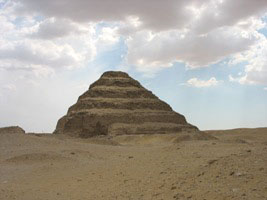 |
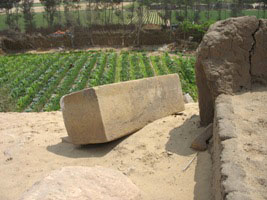 |
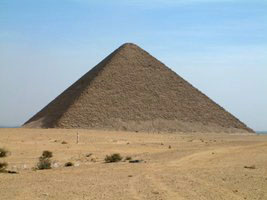 |
| Step Pyramid of Djoser, Saqqara |
View over cultivated fields from the sand gezira at Quesna |
Red Pyramid of Sneferu, Dahshur |
Radiocarbon dating is the technique used to determine the age of an object by measuring its radioactive carbon concentration. It is the most widely used scientific method for dating archaeological artefacts and contexts.
The Egyptian Historical Chronologies (EHCs) are the timelines of Egyptian rulers, as constructed by historians throughout the centuries. They have been compiled from ancient king-lists on papyri and stone, and been enhanced by archaeological evidence. The chronologies are pinned to absolute calendrical years by rare astronomical observations. Whilst by no means complete, a historical framework can be constructed for the full length of ancient Egyptian civilization.
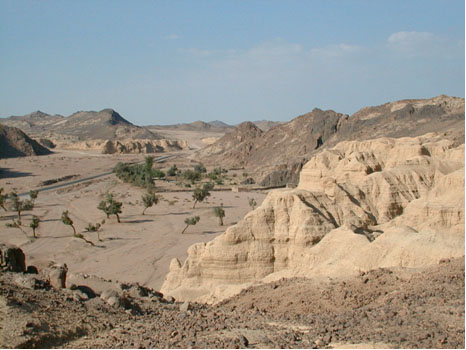 |
| Acacia trees in the southern Sinai |
Although construction of the EHCs has employed an extensive amount of historical research, comparatively few attempts have been made to cross-check them using direct scientific dating techniques. The aim of this project was to investigate the consistency of the historical chronologies with dates obtained via the radiocarbon method.
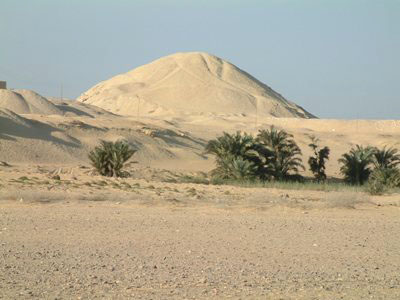 |
| Remains of Pyramid of Amenemhet I at Lisht |
Improving the accuracy and reliability of the EHCs will help Egyptologists arrange essential historical and cultural information. Moreover, the EHCs are intertwined with and fundamental to many other chronologies of the ancient Near East. Therefore, consolidating their position on the absolute timescale will facilitate a more comprehensive understanding of the ancient history of the wider Mediterranean region.
We procurred samples from major international collections which are historically datable to a given kings reign. The samples were subjected to Accelerator Mass Spectrometry radiocarbon dating. To ensure reliability, samples from more recent periods of Egyptian history, of precise known-age, were also dated. Statistical modelling of these high-precision results enabled us to draw mathematically-unbiased conclusions. Other compositional analyses (Environmental SEM, PIXE, Raman & FTIR spectroscopy) were also be carried out on selected samples.
 |
 |
| Canals in the Nile Delta |
Bent Pyramid of Sneferu, Dahshur |
The project generated three important conclusions which will help form the basis for future research in this region:
- Radiocarbon dating does give a chronology which is in broad agreement with historical estimates when the right material (short-lived plant remains from good contexts) are used for dating.
- There is a small regional offset in radiocarbon measurements (19 radiocarbon years older) - probably due to the different growing season in the Nile Valley to that of Nothern Europe.
- Radiocarbon is able to pin the chronologies of the Old, Middle and New Kingdoms with a precision which is useful in deciding between possible historical chronologies.
These main outcomes are summarised in a paper in Science.
Symposium and public lecture
A symposium on 'Radiocarbon Dating and Egyptian Chronology' was held at the Ashmolean Museum 17th-18th March 2010 with a public lecture in the Oxford University Museum of Natural History in order to discuss the main outputs of the project. The symposium had a number of chronologically-themed sessions, including discussion of the new series of radiocarbon dates generated by the project, and scholars from the international community presented papers and acted as discussants.
- Rowland, J. M. 2008. Building bridges between radiocarbon, relative and historical chronologies: The case of early Egypt. In Vymazalová, H and Bartá, M. (eds) Chronology and Archaeology in Ancient Egypt: the Third Millennium BC. Prague, Czech Institute of Egyptology
- Dee, M.W., Bronk Ramsey, C. and Rowland, J. 2008. Evaluating the Effectiveness of Radiocarbon Studies of the Old Kingdom. In Vymazalová, H and Bartá, M. (eds) Chronology and Archaeology in Ancient Egypt: the Third Millennium BC. Prague, Czech Institute of Egyptology
- Dee, M. W., Brock, F., Harris, S. A., Bronk Ramsey, C., Shortland, A. J., Higham, T. F. G. and Rowland, J. M. In Review. 2009a. Investigating the Likelihood of a Reservoir Offset in the Radiocarbon Record for Ancient Egyp, Journal of Archaeological Science (in press).
- Dee, M. W., Bronk Ramsey, C., Shortland, A. J., Higham, T. F. G., and Rowland, J. M. 2009b. Reanalysis of the Chronological Discrepancies Obtained by the Old and Middle Kingdom Monuments Project, Radiocarbon 51(3) 1061-1070 [Journal].
- Bronk Ramsey, C. 2009. Dealing with Outliers and Offsets in Radiocarbon Dating, Radiocarbon 51(3) 1023-1045 [Journal].
- Bronk Ramsey, C., Dee, M.W., Rowland, J.M., Higham, T.F.G., Harris, S.A., Brock, F., Quiles, A., Wild, E.M., Marcus, E.S., Shortland, A.J., 2010, Radiocarbon-Based Chronology for Dynastic Egypt, Science 328, 1554-1557 [Abstract, Reprint, Full text].
- Bronk Ramsey, C., Dee, M., Lee, S., Nakagawa, T., and Staff, R., 2010, Developments in the Calibration and Modelling of Radiocarbon Dates, Radiocarbon (in press)
Academic Staff:
- Professor Christopher Bronk Ramsey (Lead): Director, ORAU
- Dr Tom Higham: Deputy Director, ORAU
- Dr Andrew Shortland: Centre for Archaeological and Forensic Analysis, Cranfield University
- Dr Joanne Rowland: Research Fellow in Egyptology & Archaeological Science, ORAU
- Dr Fiona Brock: Chemistry Laboratory Manager, ORAU
Collaborating Academic Staff:
- Professor Ian Shaw: Senior Lecturer in Egyptian Archaeology, University of Liverpool
- Professor Walter Kutschera: VERA-Laboratorium, Universitaet Wien, Austria
- Professor Sturt Manning: Professor of Classics, Cornell University, USA
- Dr Stephen Harris: Druce Curator of the Oxford University Herbaria
- Dr Ezra Marcus: The Recanati Institute for Maritime Studies, University of Haifa, Israel
Research Technicians:
- Mr Phil Leach (AMS technician)
- Mr Martin Humm (AMS Infrastructure Manager)
- Ms Angela Bowles (Research technician)
- Mrs Christine Tompkins (Research technician)
- Ms Jane Davies (Research technician)
Students:
- Michael Dee: Research Student, ORAU











